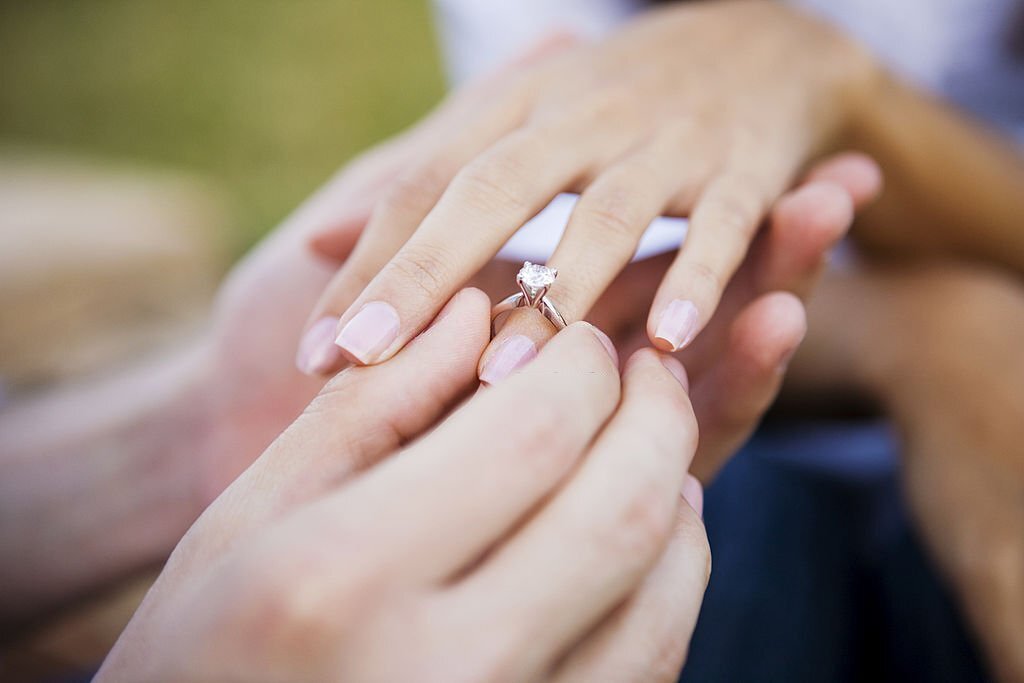An engagement ring is a monumental piece of jewelry in anyone’s life.
It symbolizes your desire to have this special person by your side for the rest of your days. It also marks the beginning of your and your partner’s journey down the aisle.
The thing is that, back in the day, you only had to answer a few simple questions to get the perfect engagement ring.
For example, do you and your partner prefer white or yellow? Would your partner like an emerald cut or a princess cut?
We’re way past that now! With so many options available, deciding what you should get is a little trickier. But there’s nothing to worry about because we’ve got you covered!
Follow these seven easy steps to get the perfect engagement ring for your partner.
Step 1: Figure Out Your Budget
Yes, the goal here is to sweep them off their feet. But that doesn’t mean you should burn a hole in your wallet! It’s always advisable to decide how much you are willing to spend on an engagement ring beforehand.
Once you’ve established your budget, selecting a ring that will impress your partner and stay within your budget will be much easier.
Just keep in mind that, when making a budget, you want to buy your lover a ring that symbolizes how much you value them.
Some people tend to connect how much you value them with the quality of the ring you give them.
Step 2: Understand That Stones Don’t Have To Be Perfect On Paper
You’ll often hear the “Four Cs” of diamonds (color, cut, clarity, and carat weight) from diamond experts.
While knowing about this is great, certificate grading should only be one of the many factors when determining the perfect engagement ring.
A D-quality stone isn’t really necessary to make a stunning ring. The Gemological Institute of America’s grading of a stone is not as important as how it makes you feel.
While the grade can be a place to start, it shouldn’t be your only determining factor.
Step 3: Get Their Ring Size Correctly
Finding your partner’s ring size may be challenging if you want to surprise the proposal. You’re not entirely out of luck, though! Measuring a ring they already own and wear is the quickest way to determine their size.
Use a piece of string or a piece of paper to wrap around the inside of the ring and measure it. Mark the point where the ends meet, then use a ruler to measure the diameter in millimeters.
If they don’t often wear rings, you can always ask their closest friends or family if they know their ring size. You can even consider asking them to go undercover to get it for you!
Alternatively, just ask a professional jeweler to help you out.
Step 4: Consult a Reliable Source for Ring Recommendations
The next step is to figure out what style of ring your partner likes. One of the best ways to do this is to consider what they already own. For instance, don’t give them a yellow gold band if they wear a lot of silver.
It’s also a good idea to ask friends and family who know your partner’s style preferences.
Try to discreetly bring up what you like or dislike about the ring if you have other friends who have recently gotten engaged. Do this in private, and definitely not in front of your friend!
The goal here is to use all the resources available to you so that you can avoid getting them a ring they won’t like.
Step 5: Choose A Shape
One of the first things that will cross your mind when choosing an engagement ring is the shape of the stone.
Do you want to go the classic route? A traditional round cut might just be for you! Or perhaps you’re looking for something a little more contemporary—the princess cut is something you should consider.
Fancier cuts, such as pear, oval, or marquise, will suit your partner if they have long, slim fingers.
Step 6: Pick and Engagement Ring Setting
You’re almost at the end of your engagement ring journey! Once you’ve determined the shape of the stone, you then have to decide on the setting. Engagement ring settings define the ring style and highlight its best qualities.
Some of the most popular settings are the following:
- Solitaire: Simple and timeless, this style is just the stone or the diamond by itself.
- Paveé: This is when a band of smaller diamonds surrounds the main stone.
- Halo: This is when the main stone is set in the center of a halo of diamonds.
- Sidestone: Sidestone rings have two or three additional tiny diamonds placed on either side of the main stone.
- Three Stones: Three different stones are often arranged in a three-stone setting, with the largest stone in the middle.
Step 7: Choose A Reputable Jeweler
An engagement ring is a significant investment, so purchasing it from a jeweler you trust is crucial. Your jeweler should be knowledgeable, approachable, and able to explain how to purchase a diamond in simple terms.
Make sure they meet the following criteria:
- Flexible policy for returns and exchanges
- Customer-friendly warranty policy
- Outstanding customer service
- Positive testimonials from previous clients
Patience Leads To Perfection When It Comes To Engagement Rings
Good things come to those who wait—especially when choosing the perfect engagement ring. Just don’t forget to enjoy the process of searching for and selecting the right one.
Good luck! Sooner or later, you’ll be off to find unique wedding rings for you and your partner.




![Best Fashion Brand Company in the World [Top 5] 5 fashion brand companies](https://www.shopplax.com/wp-content/uploads/2024/06/Fashion-Brand-Company-in-World-218x150.jpg)



![How To Get A Ring Off a Swollen Finger [Update] How To Get A Ring Off a Swollen Finger](https://www.shopplax.com/wp-content/uploads/2024/01/How-to-get-a-ring-off-218x150.webp)



